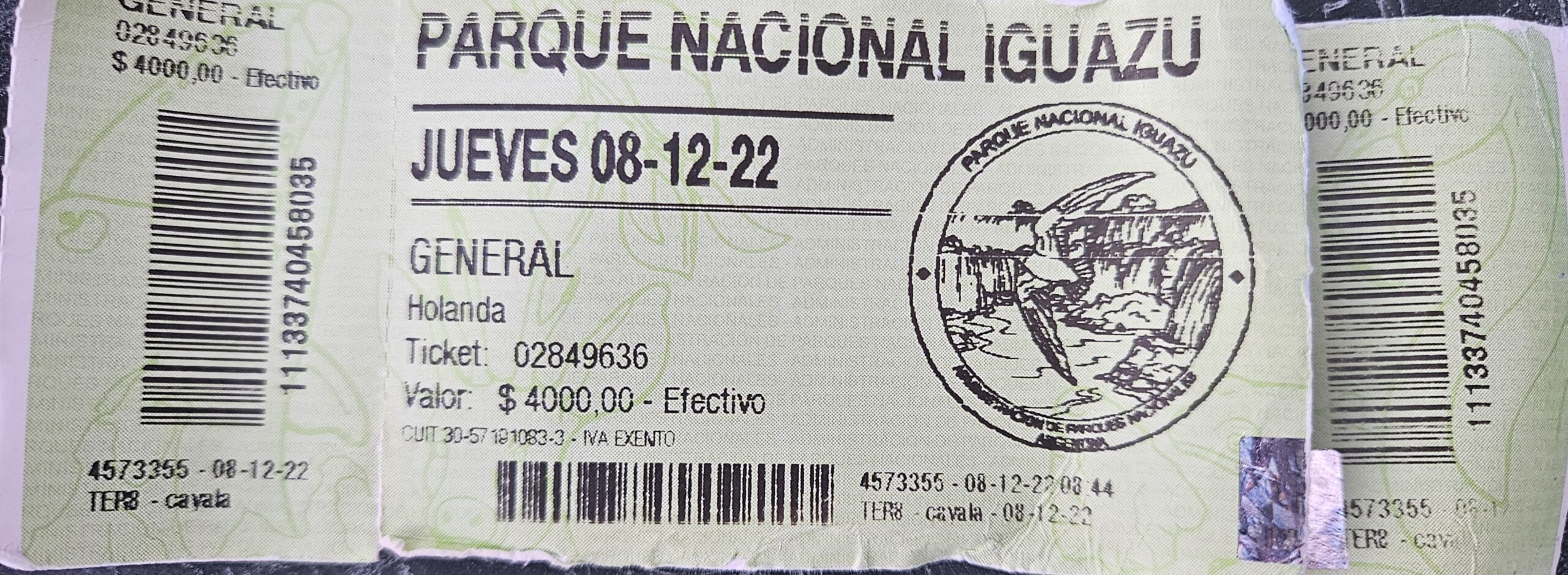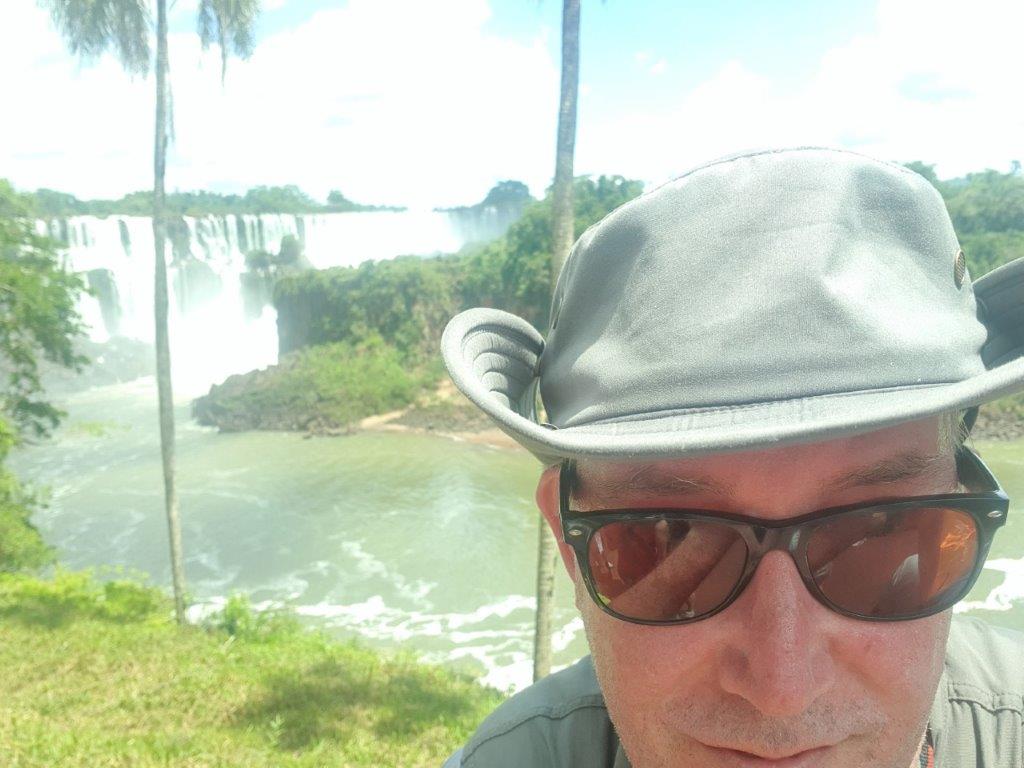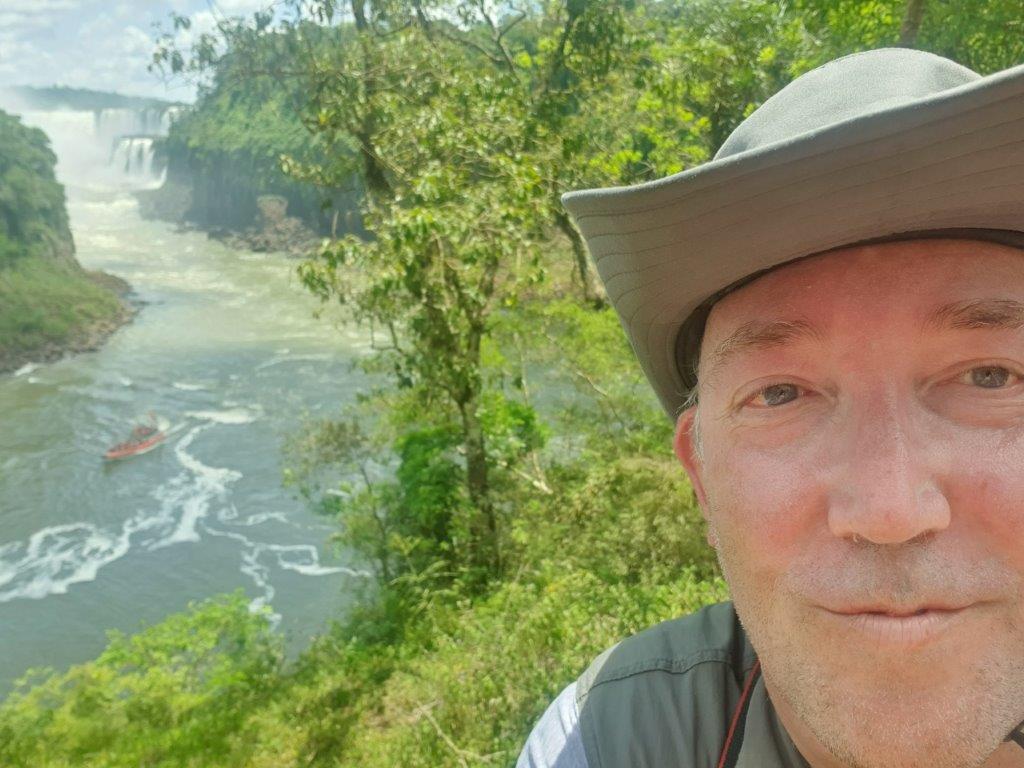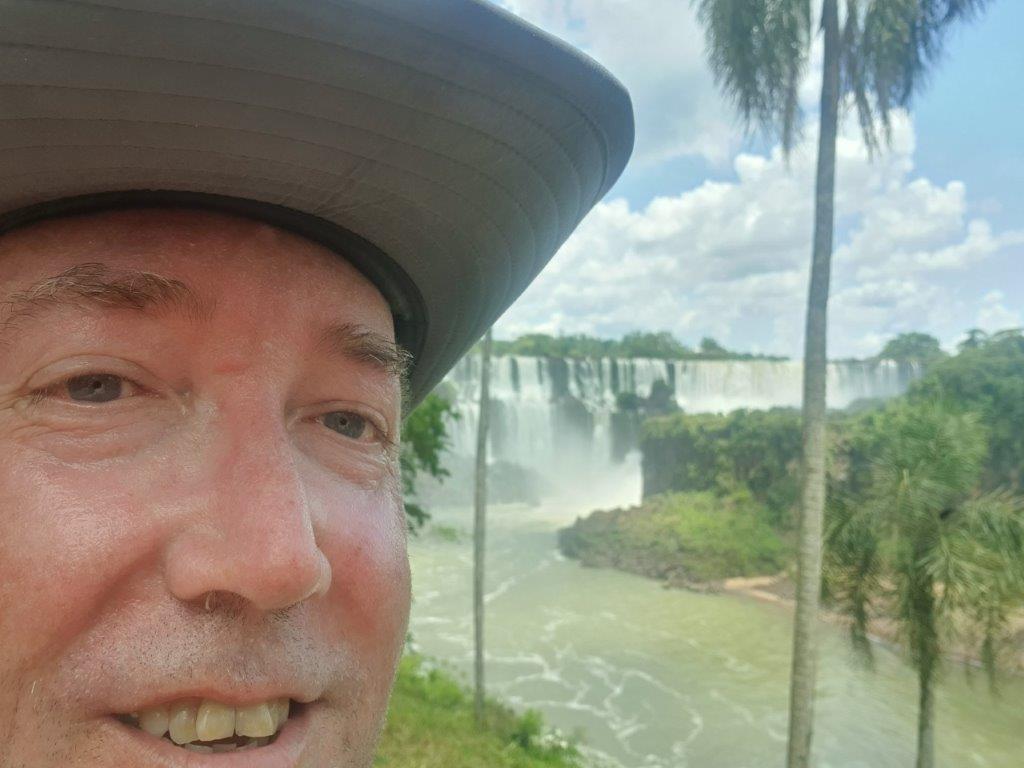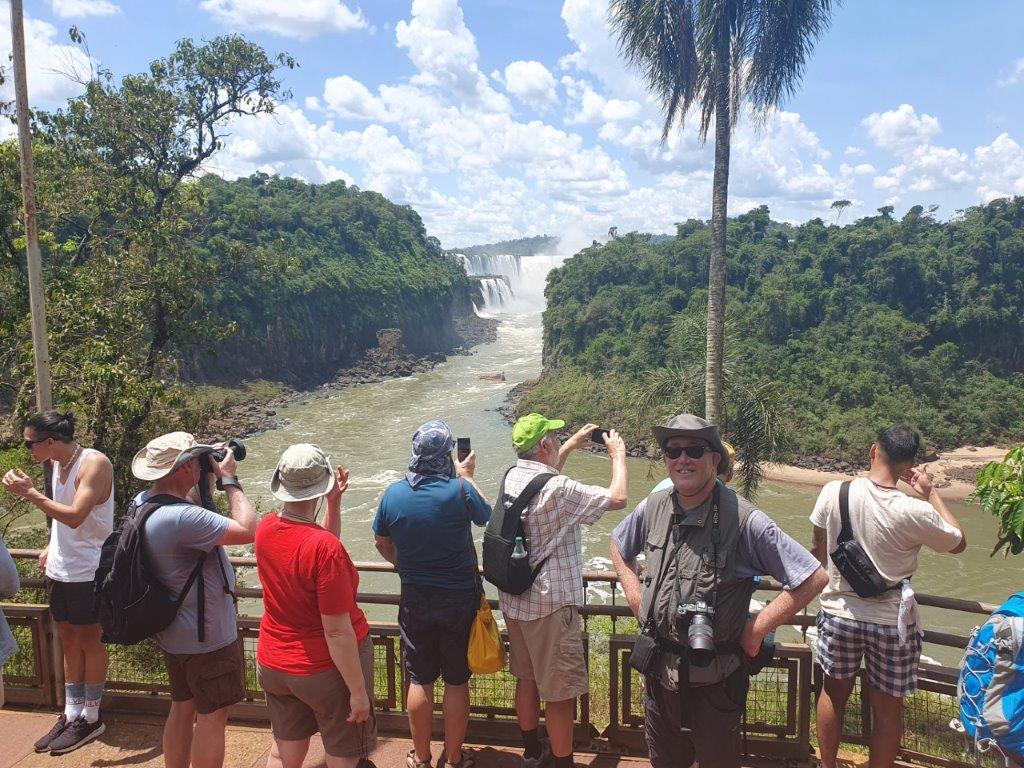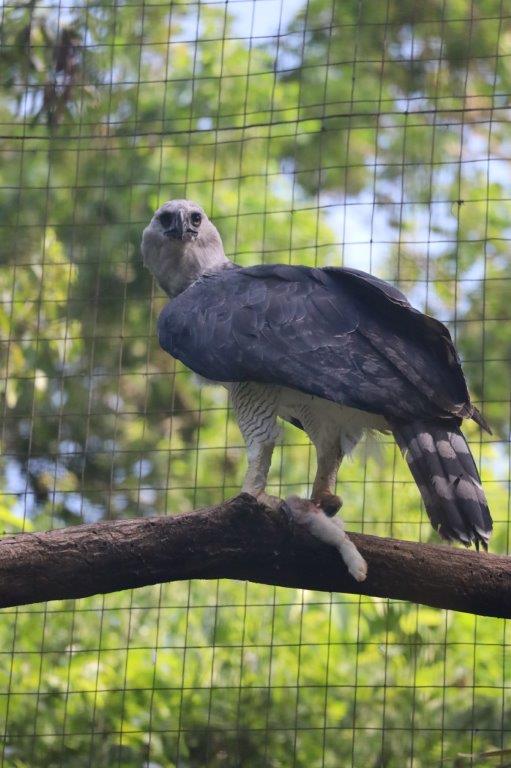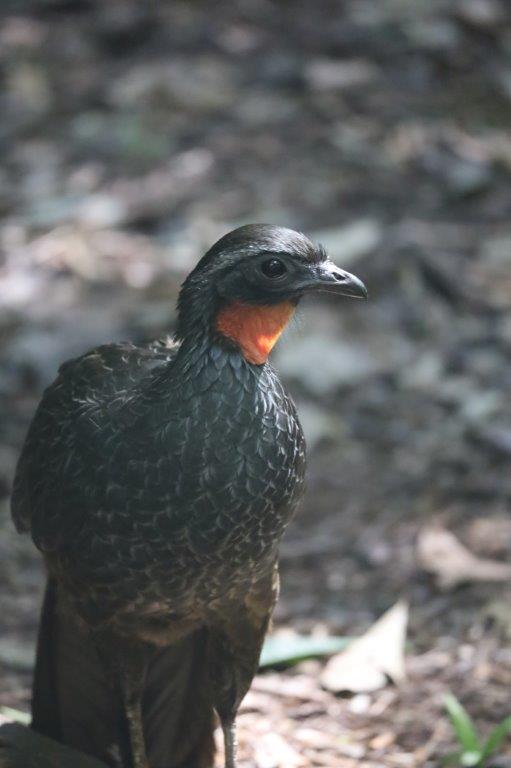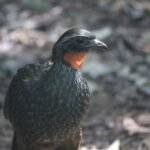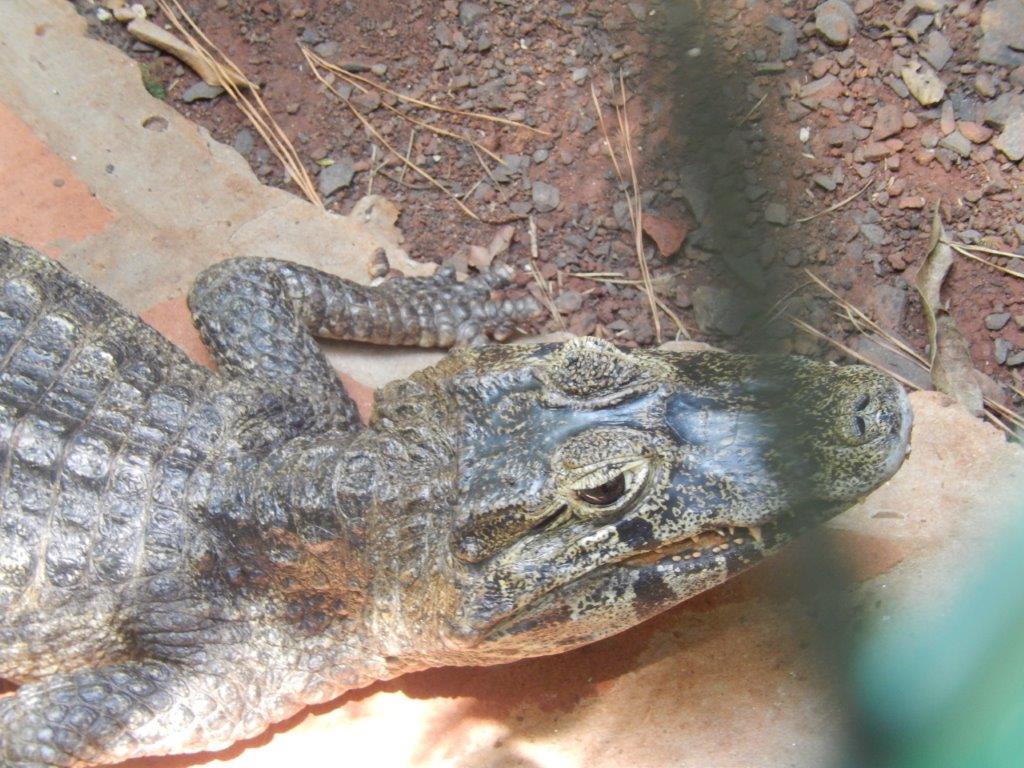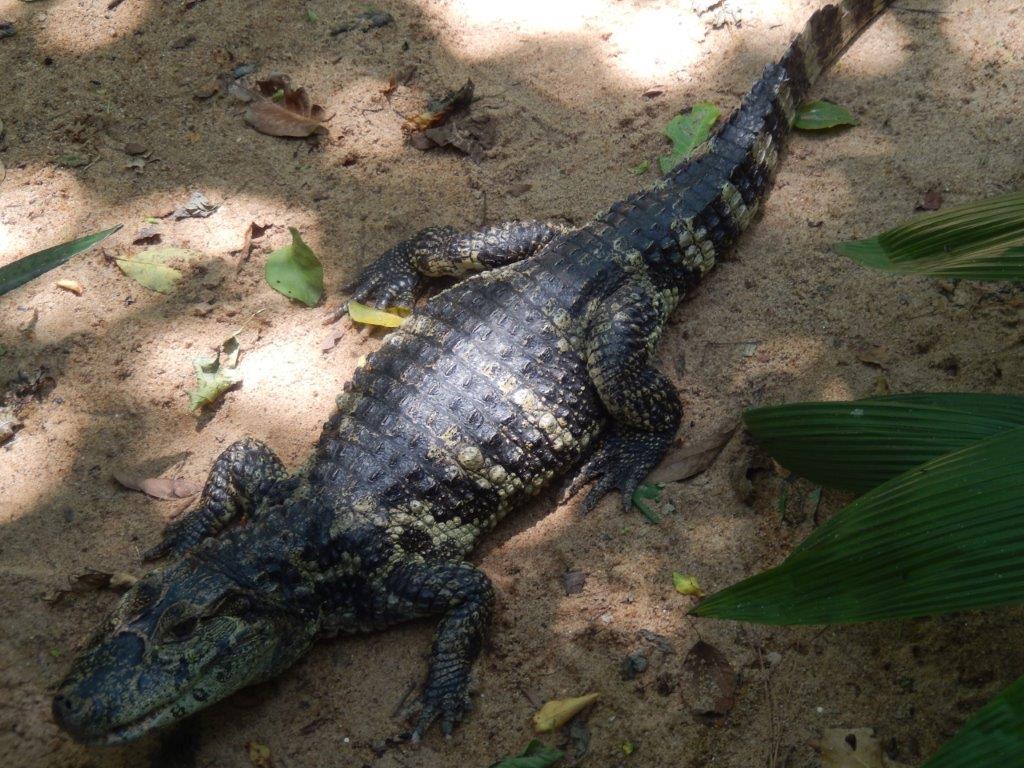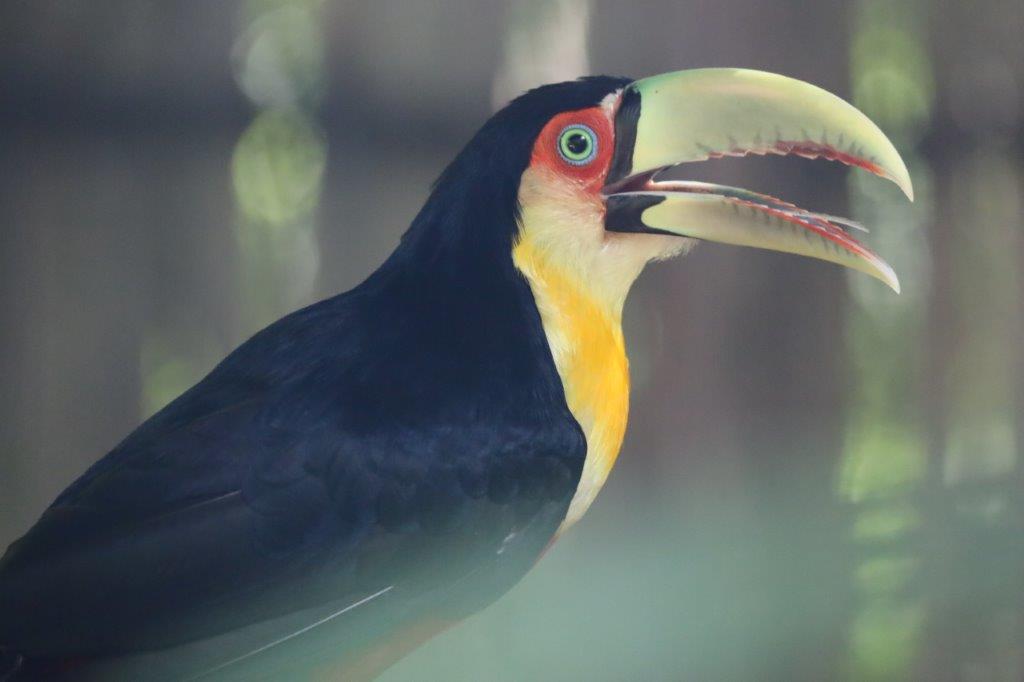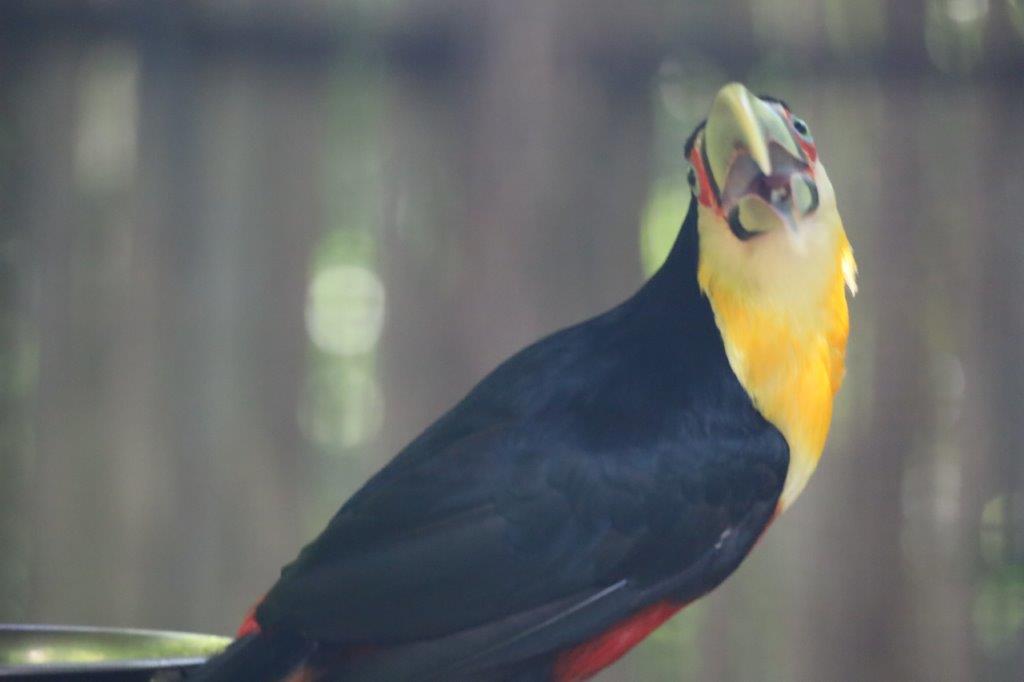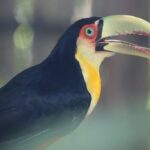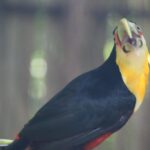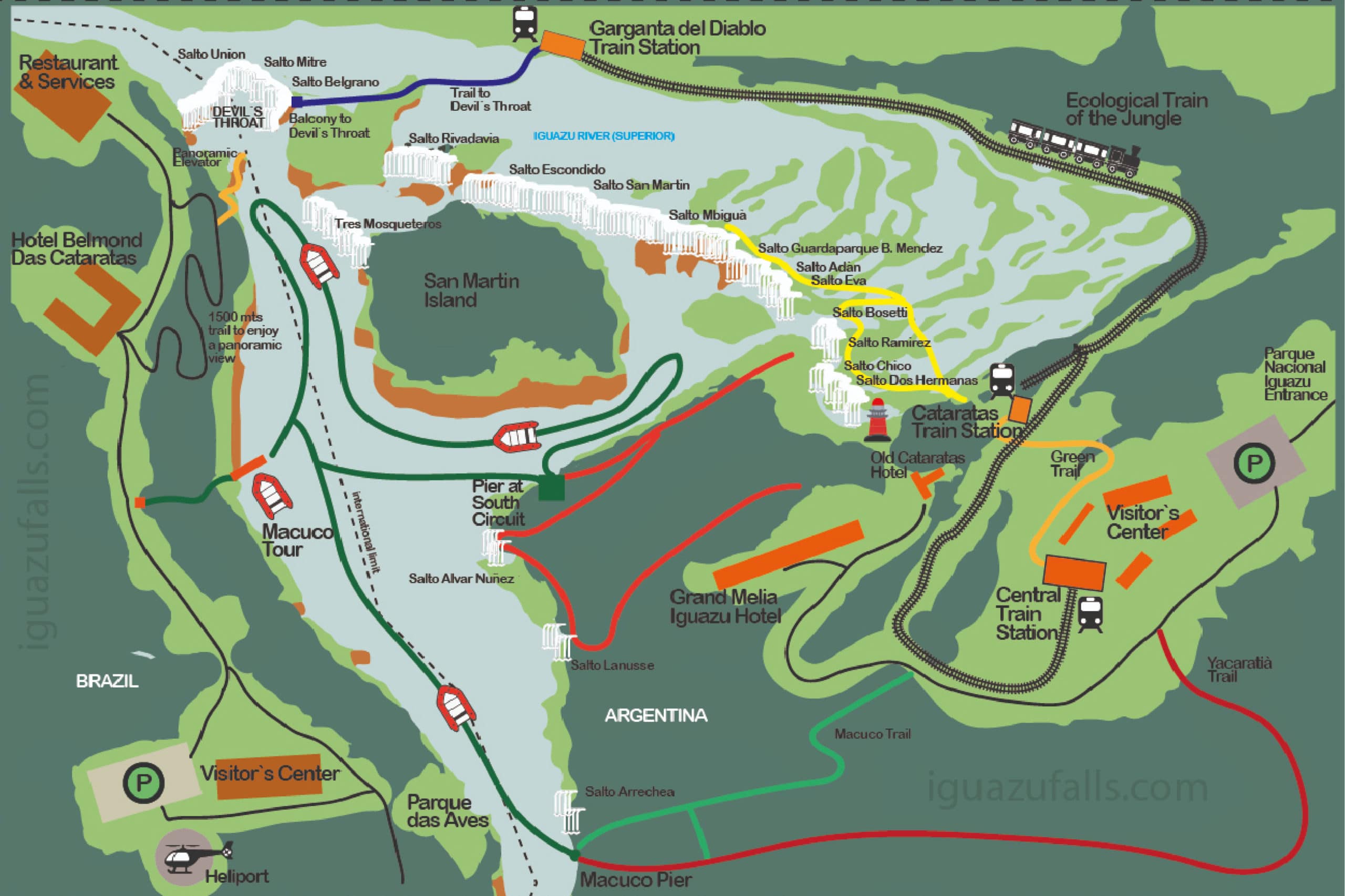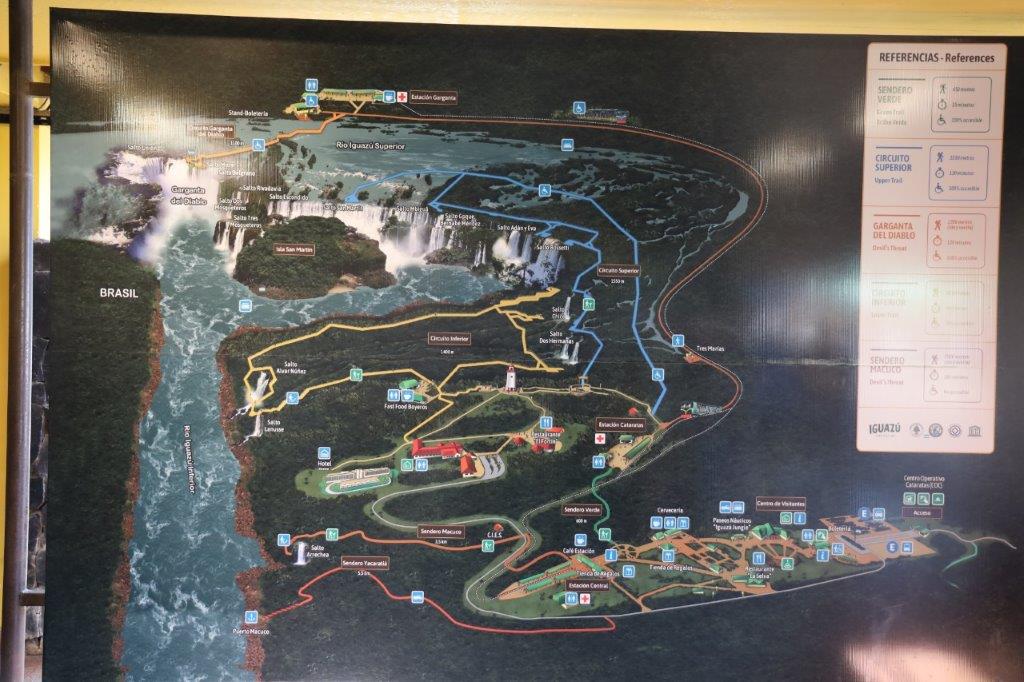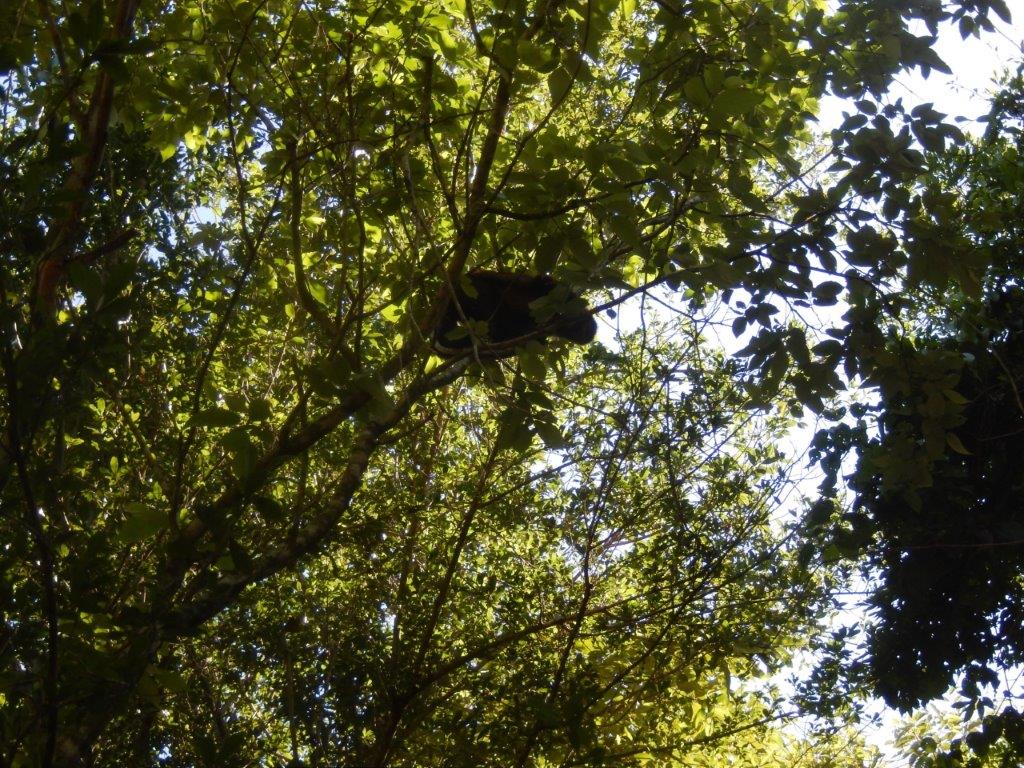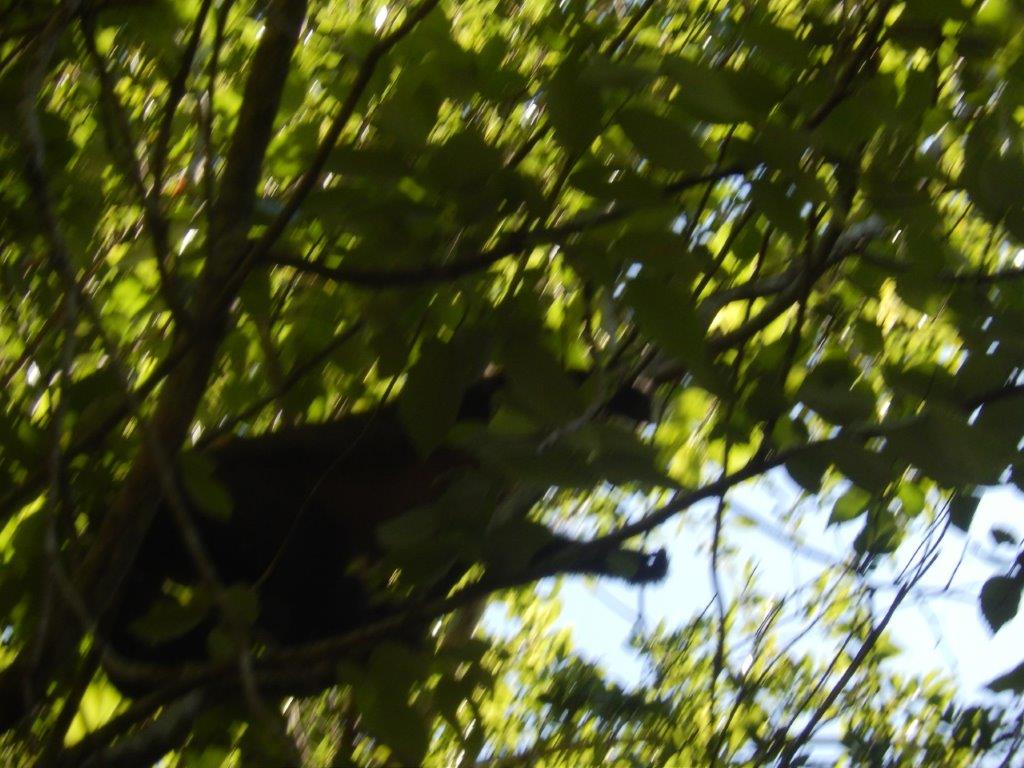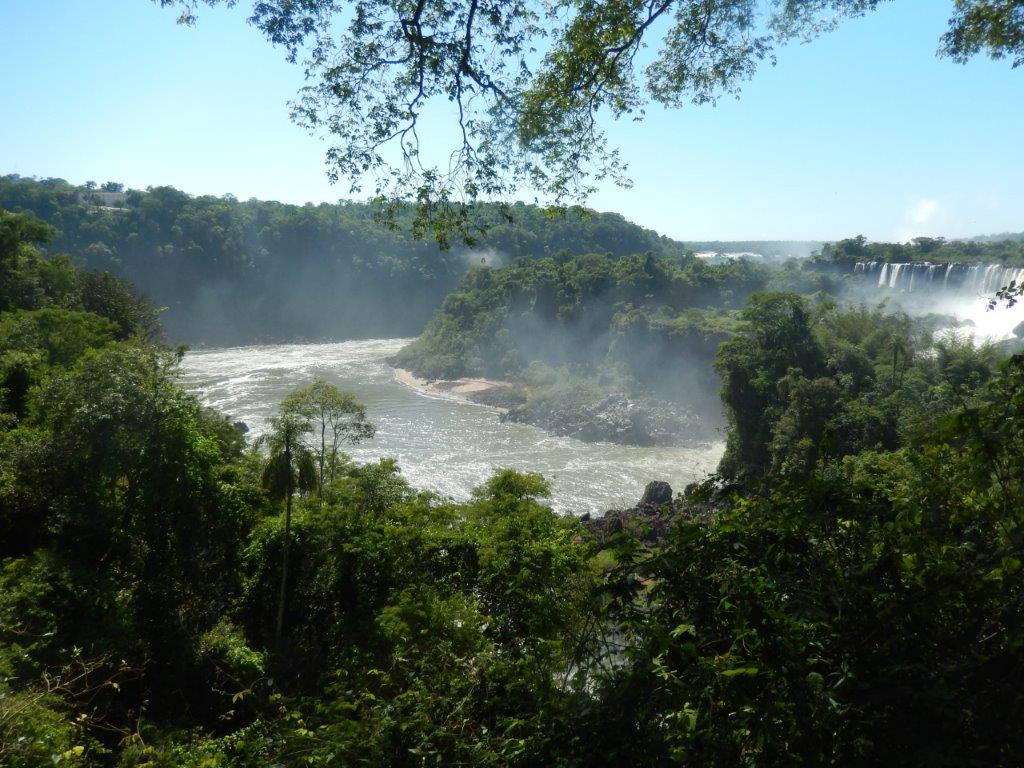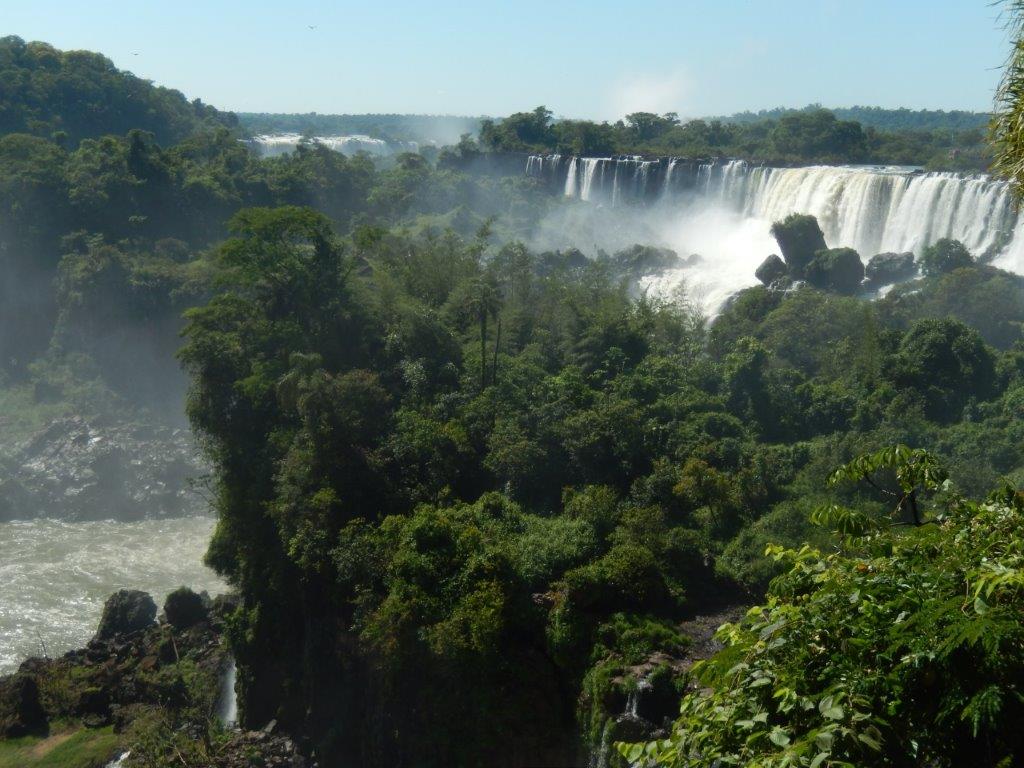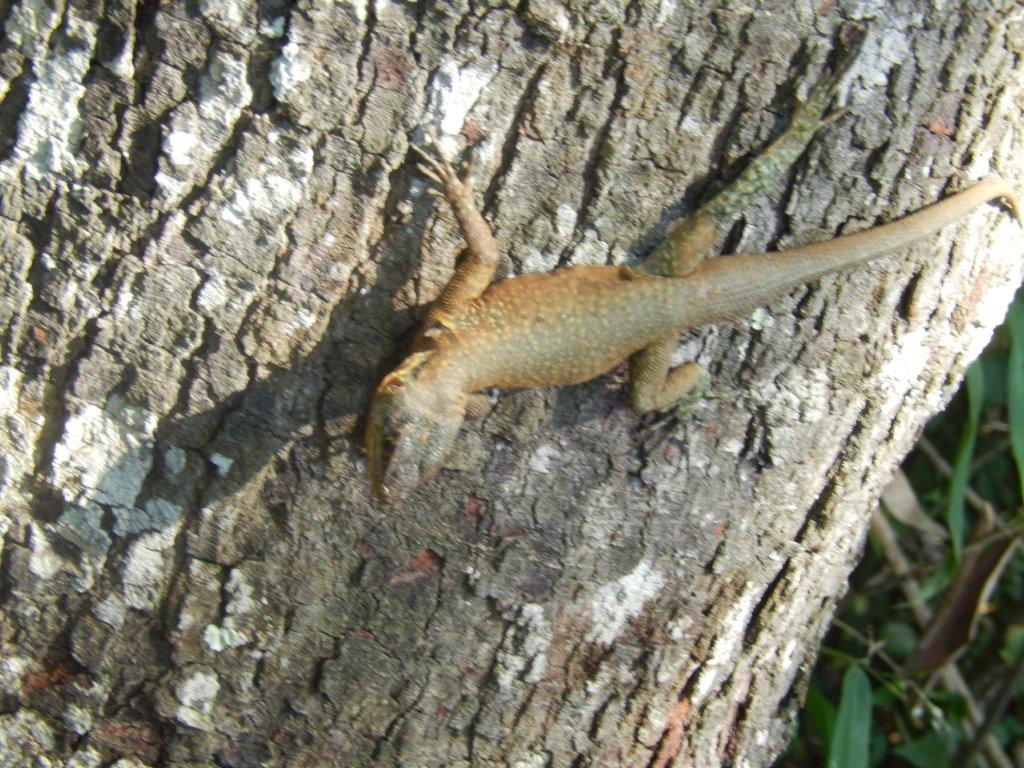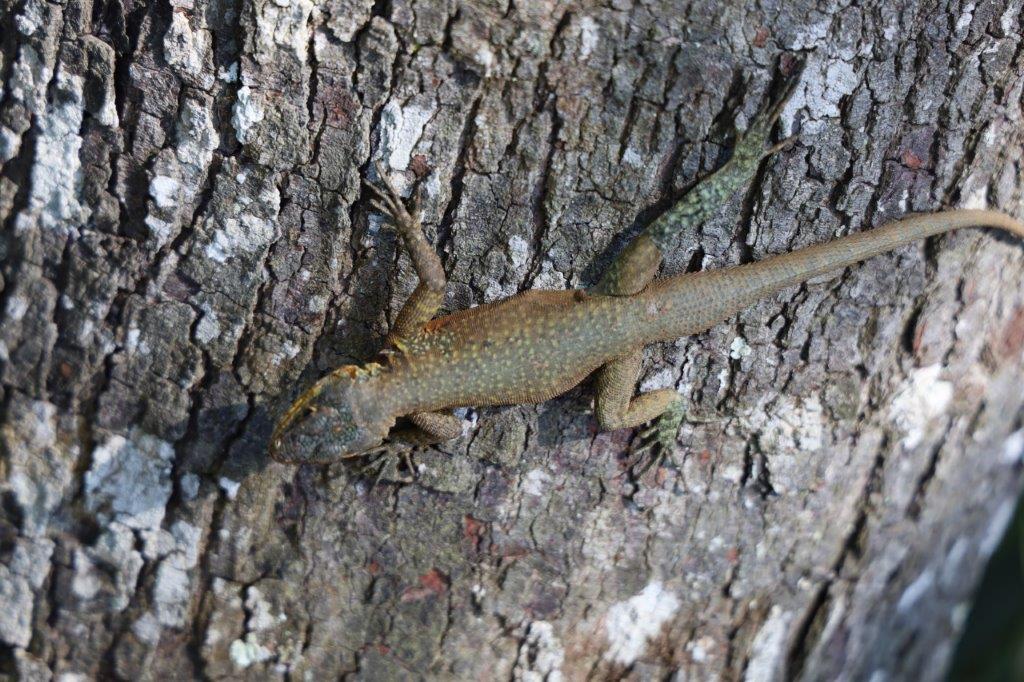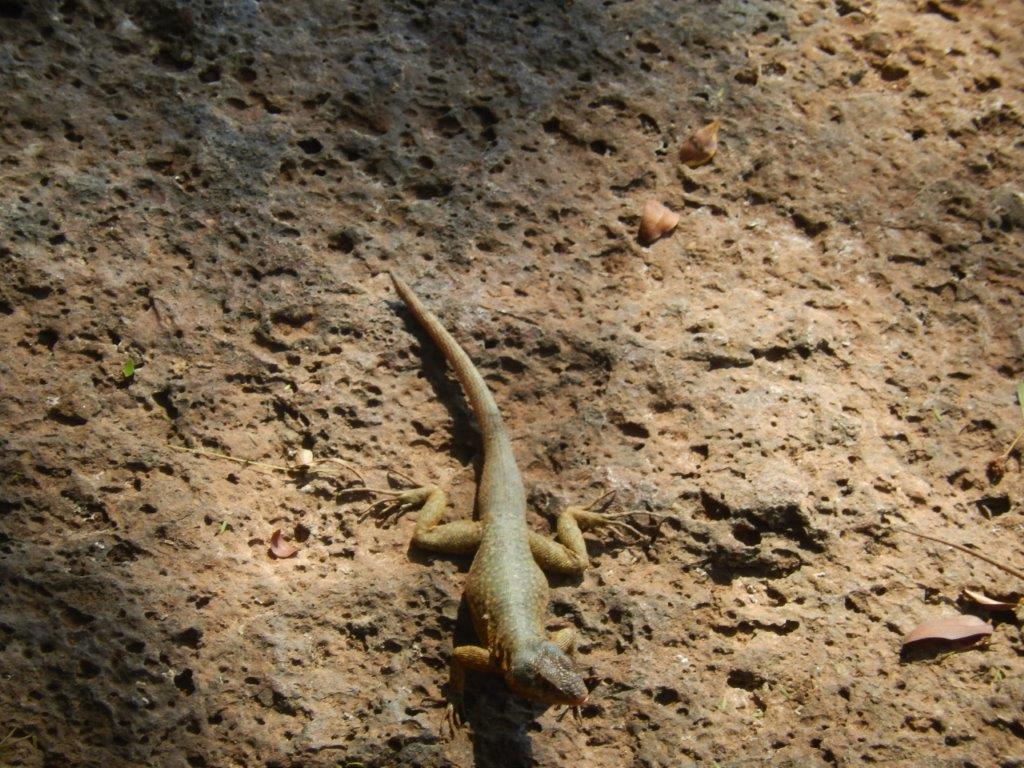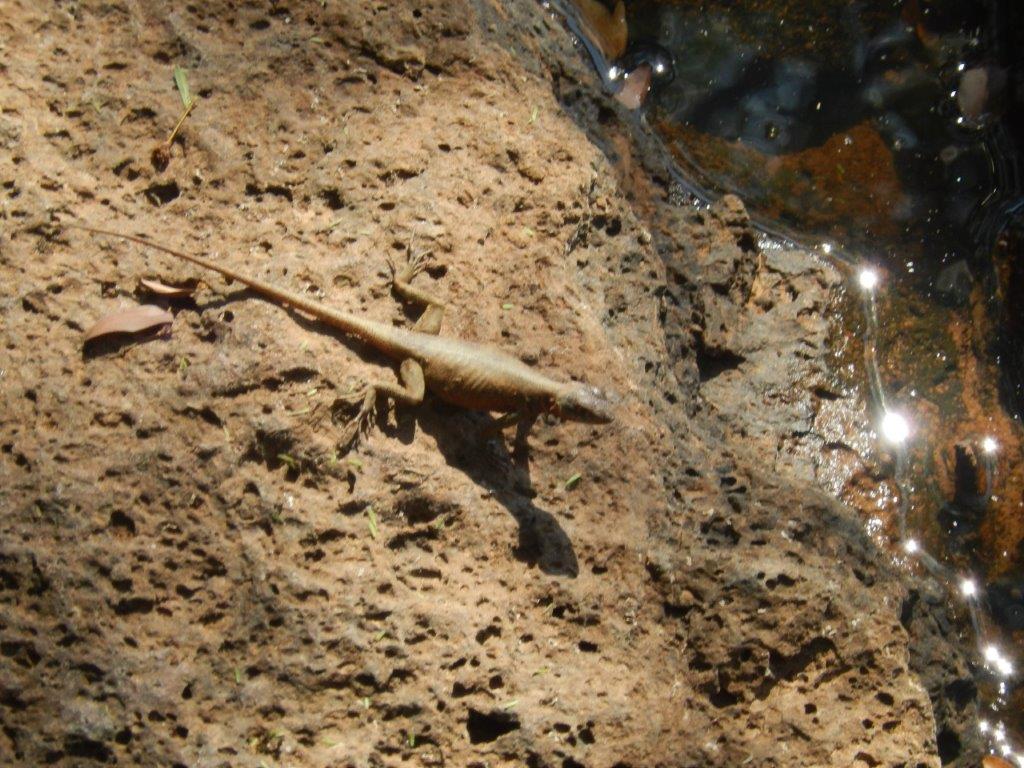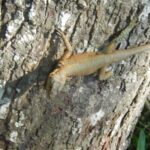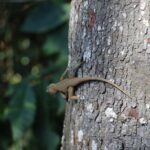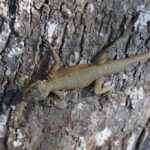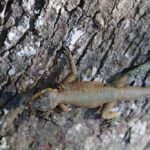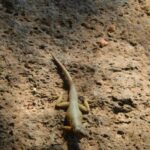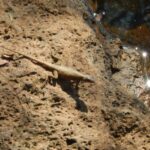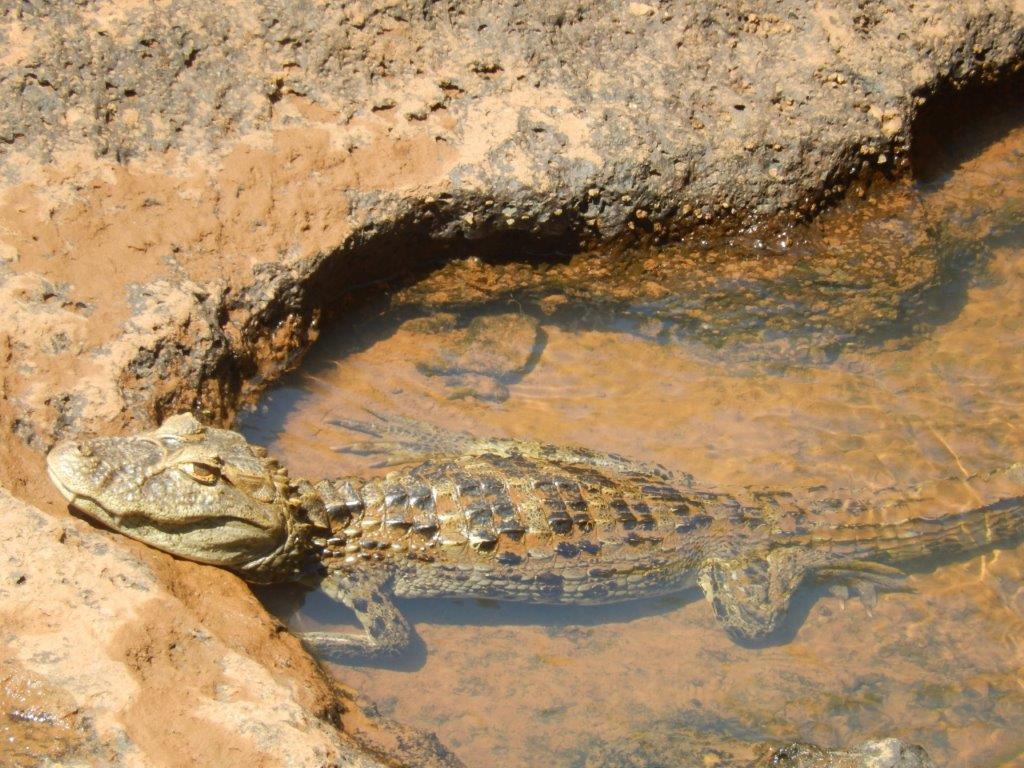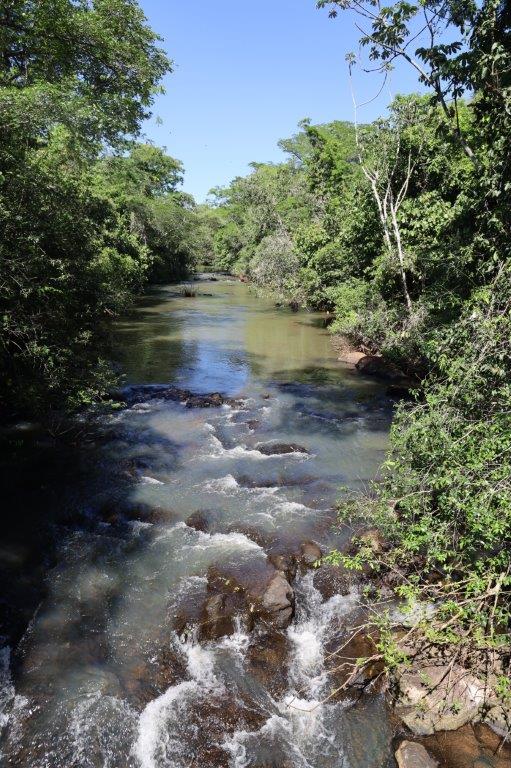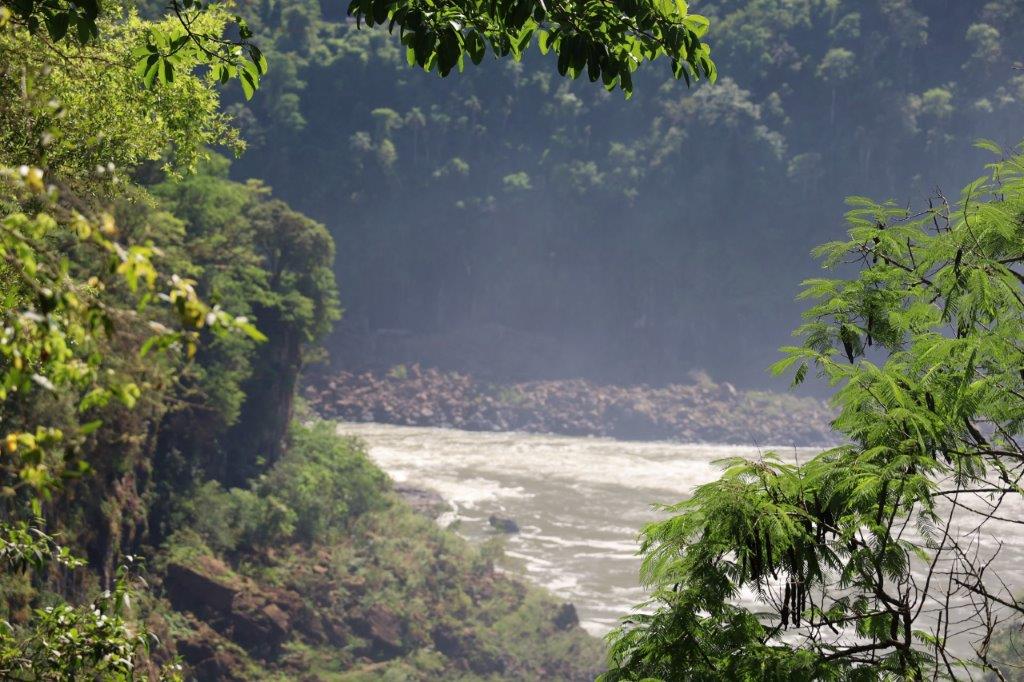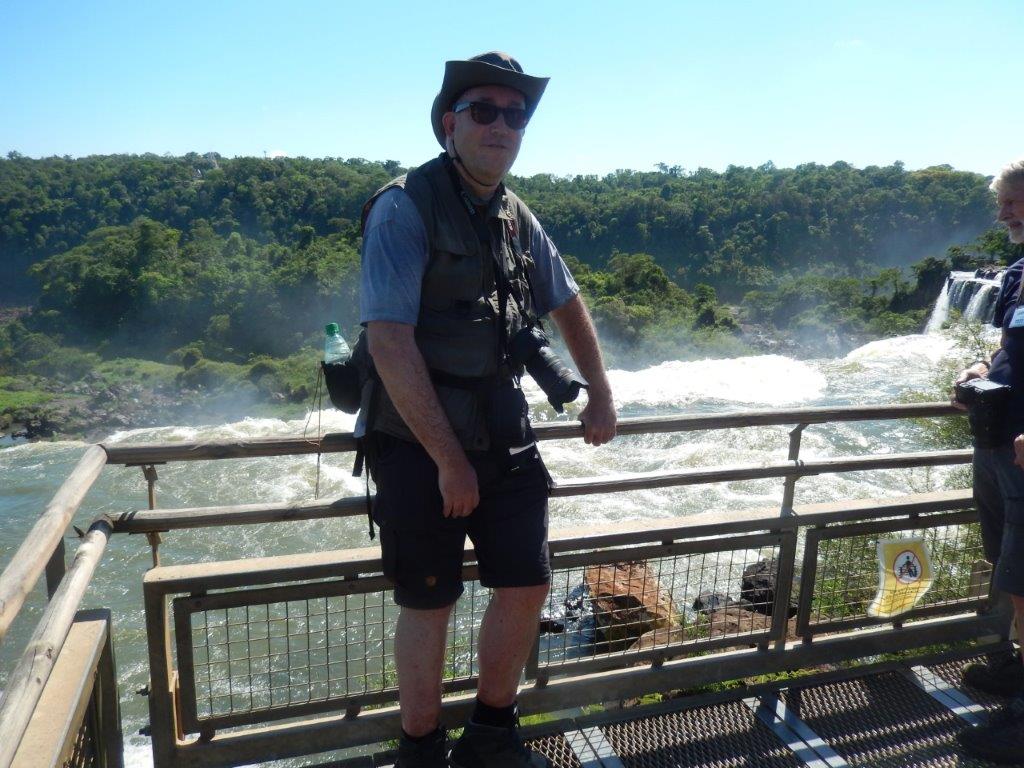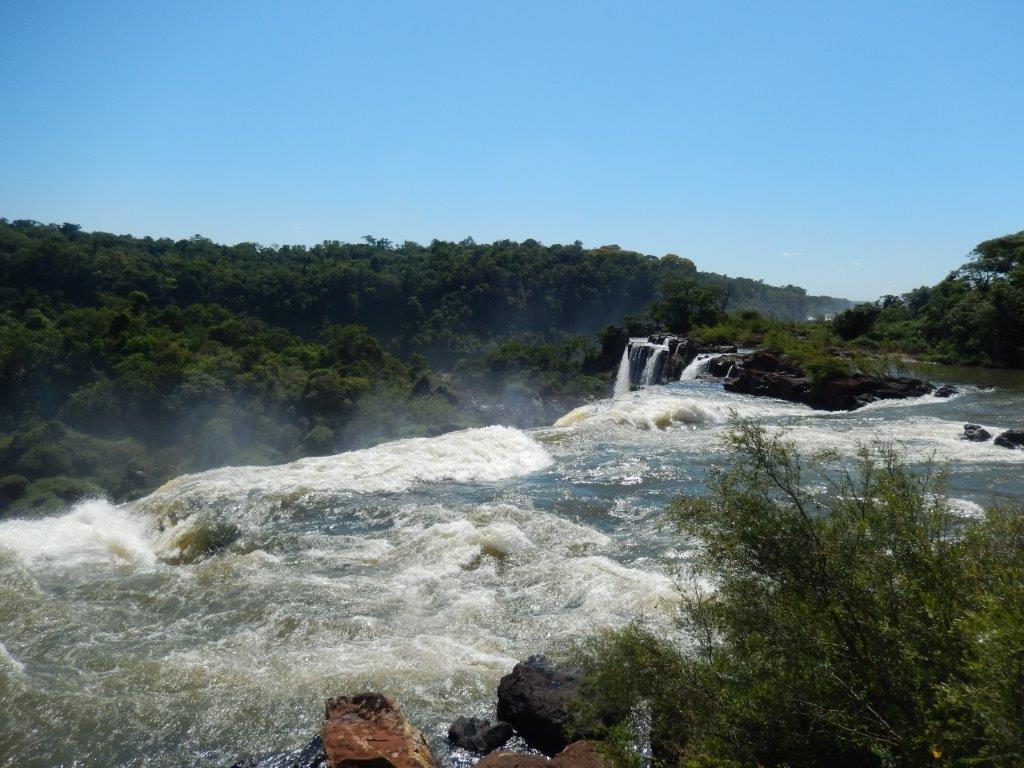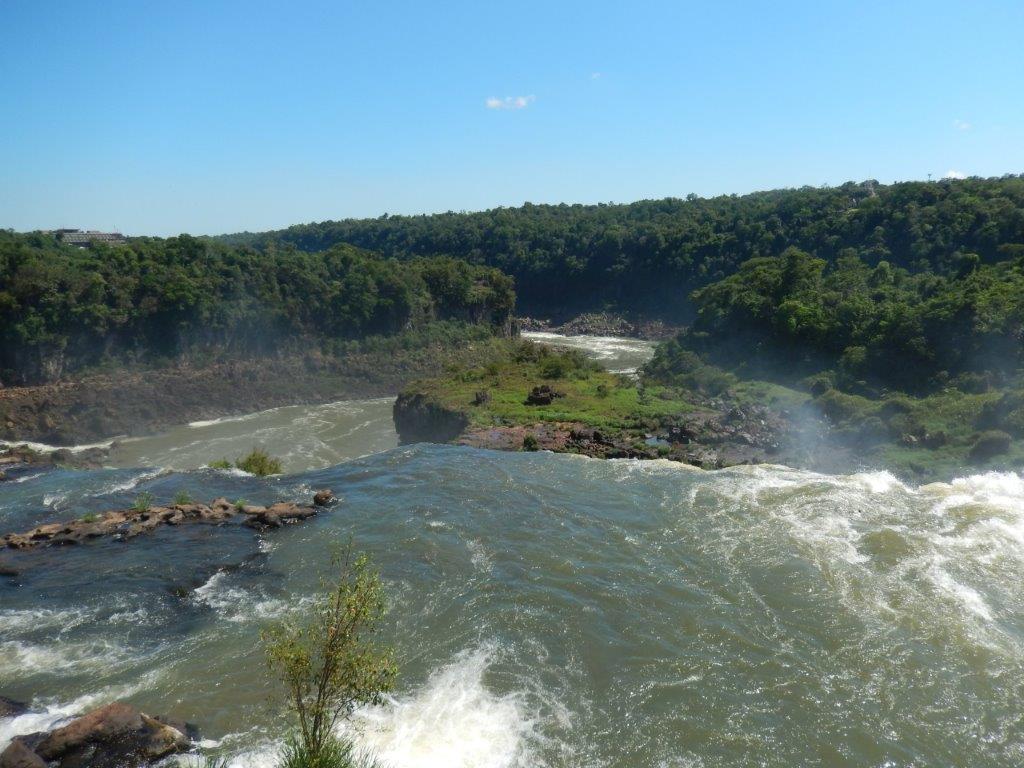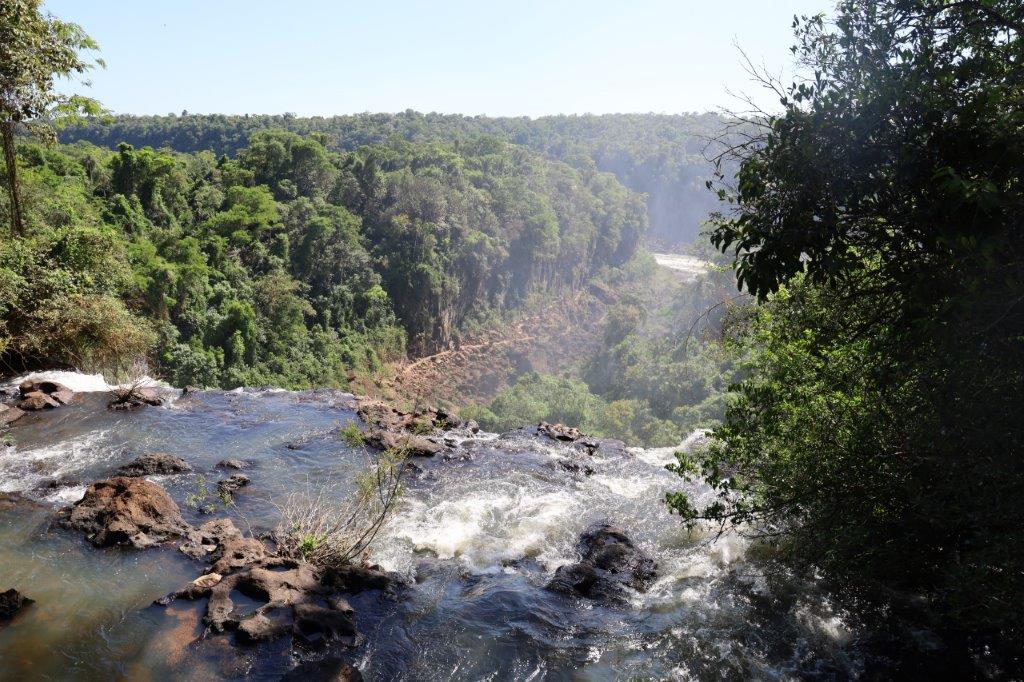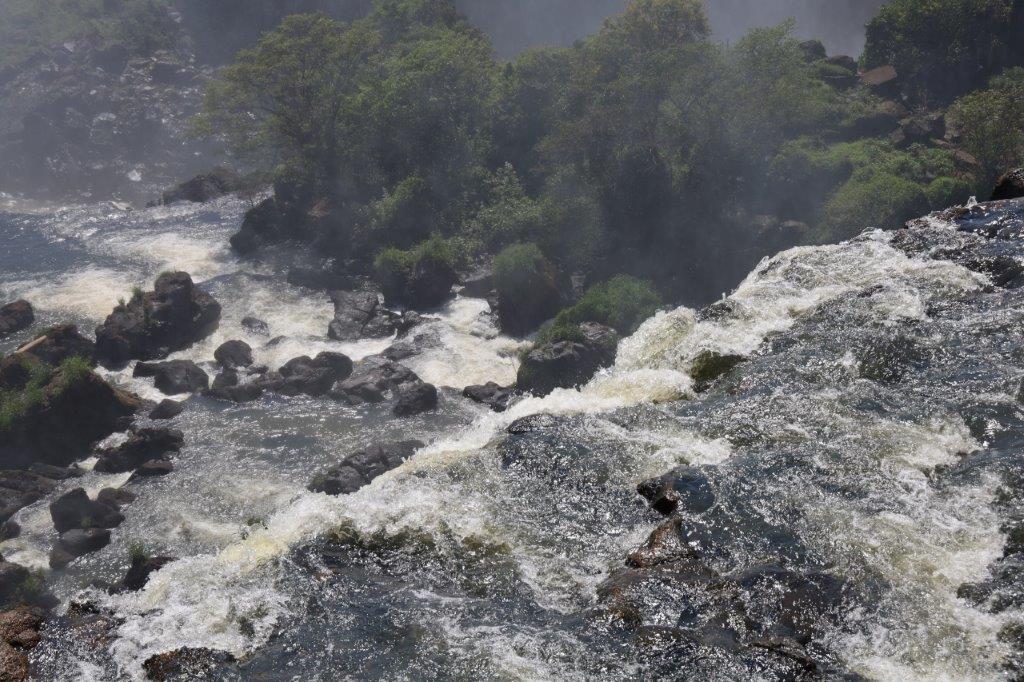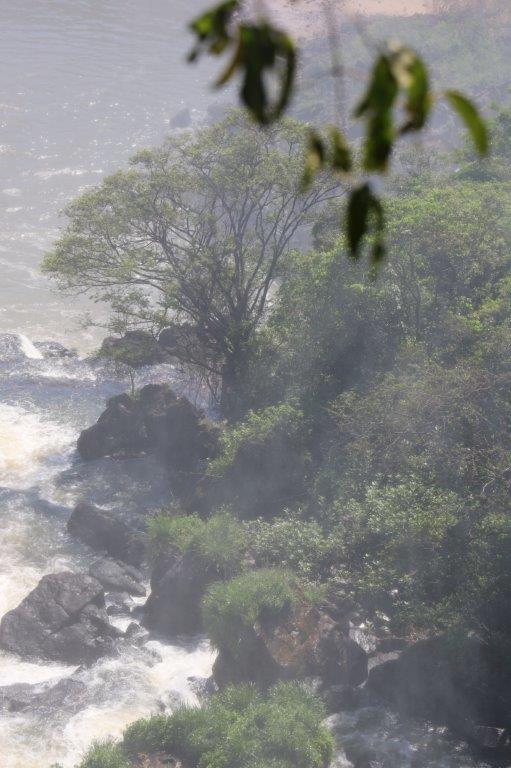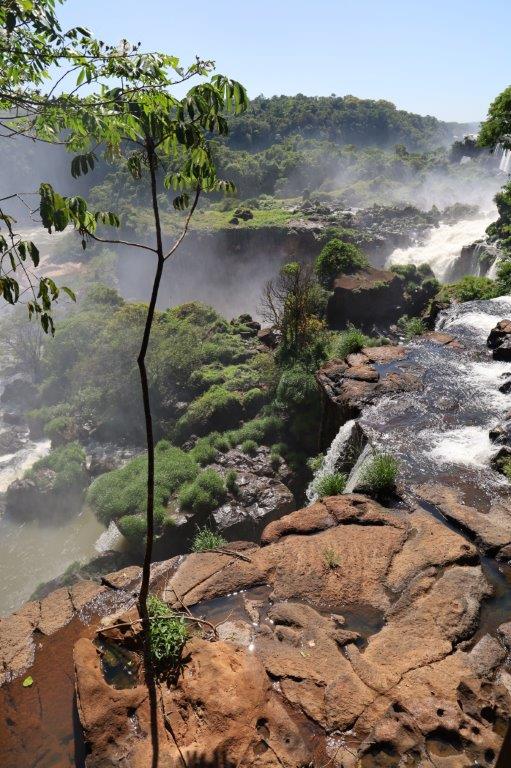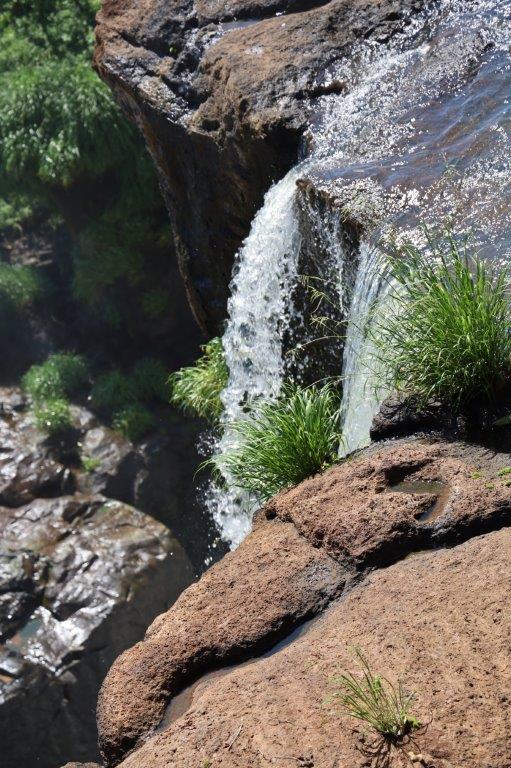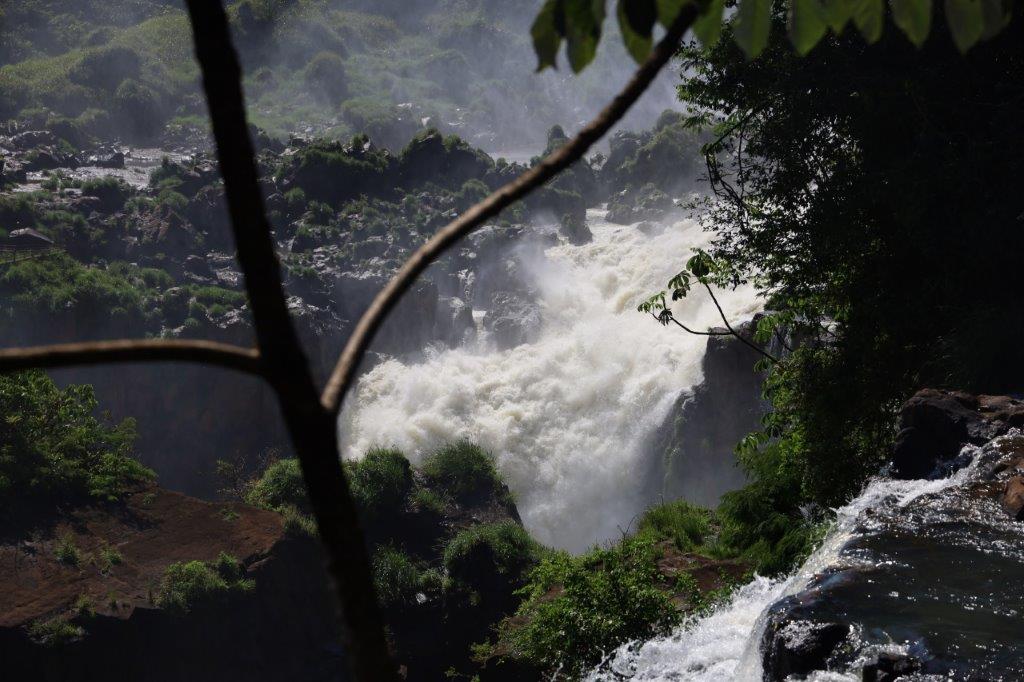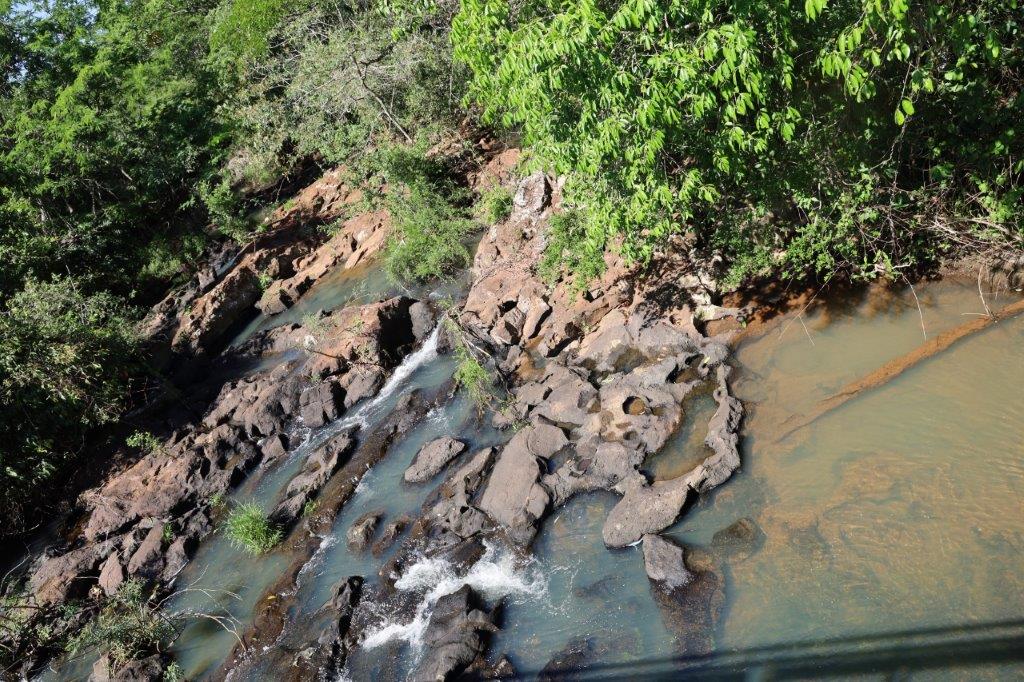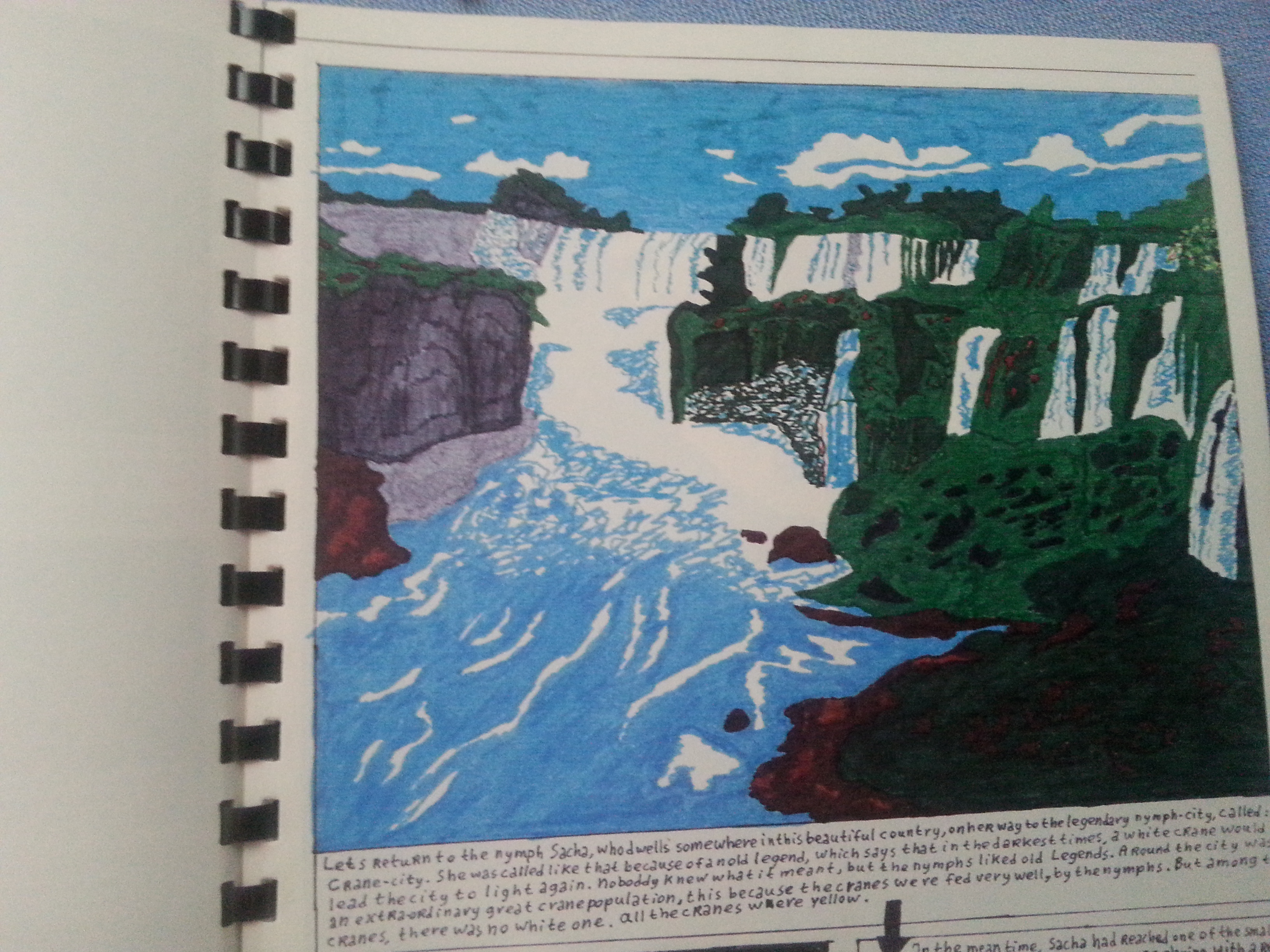52. Argentina: Parque Nacional Iguazú/Iguazú National Park/UNESCO World Heritage Site
After The Wandelgek had visited the Brazil side of the falls, it was now time for the Argentine side.
Early in the morning, right after breakfast, he drove straight to the:
Iguazú National Park
The Iguazú National Park (Spanish: Parque Nacional Iguazú) is a national park of Argentina, located in the Iguazú Department, in the north of the province of Misiones, Argentine Mesopotamia. It has an area of 677 km2 (261 sq mi).
The area of the park was inhabited 10,000 years ago by the hunter-gatherers of the Eldoradense culture. They were displaced around 1,000 CE by the Guaraní, who brought new agricultural technologies, and were displaced in turn by the Spanish and Portuguese conquistadores in the 16th century, though their legacy is still alive in this area (the name of the park and the river is Guaraní y guasu, “large water”). The first European to visit the zone was Álvar Núñez Cabeza de Vaca, in 1542; Jesuit missions followed in 1609.
The park was created in 1934 to protect one of the greatest natural beauties of Argentina, the Iguazu Falls, surrounded by the subtropical jungle.
The Iguazú National Reserve was defined by law 18.801 of 7 October 1970 as constituting the western part of the Iguazú National Park. While the national park preserves nature with the least possible alteration, the reserve admits human activities and infrastructure. Creation of the reserve allowed construction of an international airport and alienation of land for three tourist hotels. Across the Iguazu River lies its Brazilian counterpart (Iguaçu National Park). Both sites were declared World Heritage Sites by UNESCO, in 1984.
The park would be part of the proposed Trinational Biodiversity Corridor, which aims to provide forest connections between conservation units in Brazil, Paraguay and Argentina in the Upper Paraná ecoregion. The southeast of the park adjoins the 84,000 hectares (210,000 acres) Urugua-í Provincial Park, created in 1990.
The park lies within the Alto Paraná Atlantic forests ecoregion. The fauna of the park includes several rare and threatened species: jaguar, jaguarundi, South American tapir, ocelot, tirica, anteater, the black-fronted piping guan, the harpy eagle, …
and the yacare caiman.
One can also find birds like the great dusky swift and large toucans, mammals like the coatí, and a diversity of butterflies. The vinaceous amazon, named for its wine-colored plumage, is occasionally found in this park.
The Iguazú River ends in the Paraná River 23 km beyond the falls, after a 1320 km course. Inside the park it becomes up to 1,500 m wide and turns first south, then north, forming a large U-shape. Its banks are densely populated by trees, including the ceibo (Cockspur coral tree), whose flower is Argentina’s national flower. The flora of the park also features lapacho negro and lapacho amarillo (family Bignoniaceae), as well as palmito trees and the 40-metre-high palo rosa (family Apocynaceae).
The map:
Onthe map below everyting right from the center of the river Iguazu, including San Martin Island is Argentina. The dash line is actually the border.
On the Argentine side you’ll be led closer to the actual falls (which almost all if them are in Argentina). The Brazil side is more about the beautiful views from a certain distance.
On the above map, The Wandelgek started with the green Sendero Verde (Green trail) section from the Visitor center at the entrance to the railway station and tge followed first the blue Circuito Superior (Upper trail). Later the yellow Circuito Inferior (Lower trail).
The sendero verde
There are more trails to follow on the Argentine side (on the Brazil side only 1) that go to the falls. The Wandelgek wanted to follow three of those, but the trail to the Garganta Diablo was closed because due to heavy rainfall and a subsequent rise in water level in early Spring, the walking trails on/above the water had been swept away and were now in reparation. Even the trains to Garganta Diablo were out of service now.
But The Wandelgek had seen Garganta Diablo from the Brazilian side. In Brazil you’ll see it from the bottom upwards. In Argentina you are led over the Iguazu river to its top to look down. In the lower cicuit you’ll see it too, but from a larger distance.
Then there were 2 trails left to walk. The Circuito Inferior and the Circuito Superior. One was following the top of the falls, the other was going to the bottom of the falls.
The Wandelgek 1st walked the Circuito Superior.
Another difference between a visit to the falls in Brazil or Argentina are the larger trail parts in the subtropical rainforest and at the Iguazu river, just before it plunges into the depth in Argentina. In Brazil you already are past the plunge.
I unsuccesfully photographed a monkey up in the trees.
The views were already quite good, showing a wild Iguazu river and further away were the falls again.
The short green trail section (Sendero Verde) did show off with some wildlife like e.g. this beautiful small tree lizzard …
Small tree lizzard
A bit further on the Circuito Superior The Wandelgek spotted a Caiman/Alligator/Crocodile lying in a shallow pool …
The Wandelgek was quite surprised to see how many wildlife there was around the falls and in the rainforest and of course he could continuously hear a lot of that wildlife, which roamed freely and was not confined into aquarium like cages or fenced concrete pools like the ones at the ecopark I wrote about in my previous blogpost 🥹
The Iguazu river
The Iguazu River also called Rio Iguassu, (from the Guaraní í Guazú, literally “Big Water”) is a river in Brazil and Argentina. It is an important tributary of the Paraná River. The Iguazu River is 1,320 kilometres (820 mi) long, with a drainage basin of 62,000 km2 (24,000 sq mi).
The Iguazu originates in the Serra do Mar coastal mountains of the Brazilian state of Paraná and close to Curitiba. For 1,205 kilometres (749 mi), to its confluence with the San Antonio River, the Iguazu flows west through Paraná State, Brazil. Down river from the confluence, the Iguazu River forms the boundary between Brazil and Argentina’s Misiones Province. Continuing west, the river drops off a plateau, forming Iguazu Falls, which are accessible via the Rainforest Ecological Train. The falls are within national parks in both Brazil, Iguaçu National Park, and Argentina, Iguazú National Park. It empties into the Paraná River at the point where the borders of Argentina, Brazil, and Paraguay join, an area known as the Triple Frontier. More about that later.
Unlike tropical South American rivers, where the annual variations in temperature are relatively limited, the water in the subtropical Iguazu River varies significantly depending on season. At two sites, one located just above and another just below the falls, the water at both varied from about 15.5 to 29 °C (60–84 °F), and average was just below 22 °C (72 °F). The pH is typically near-neutral, ranging from 5.9 to 8.7.
The circuito superior
On top of the falls
The sendero superior was leading right parallel to the edge of the falls …
There’s not much as spectacular as seeing water falling down over a great distance, but looking over the edge of such a fall, specially such a large one like Iguazu is coming close …
Not far from the drop, the water of the river is still quite easy going, …
… but then it drops and its untamable fury is unleashed in a riverwide angry foaming whitewater whirlpool of several kilometers long …
This water ends up in the Rio de la Plata and eventually in the Southern Atlantic Ocean…
It’s really like two giant steps of a stairway are hewn into the rock…
I actually read about someone recommending taking a train from Buenos Aires to Iguazu falls via San Pedro which took 3 to 4 hrs. Major BS. This or a bus connection will take you to Iguazu in about 18 to 20 hrs. A car is a bit faster: 14 to 16 hrs, but a plane saves most time. It takes only 1.55 hr to get there and is the only choice if your planning a daytrip.
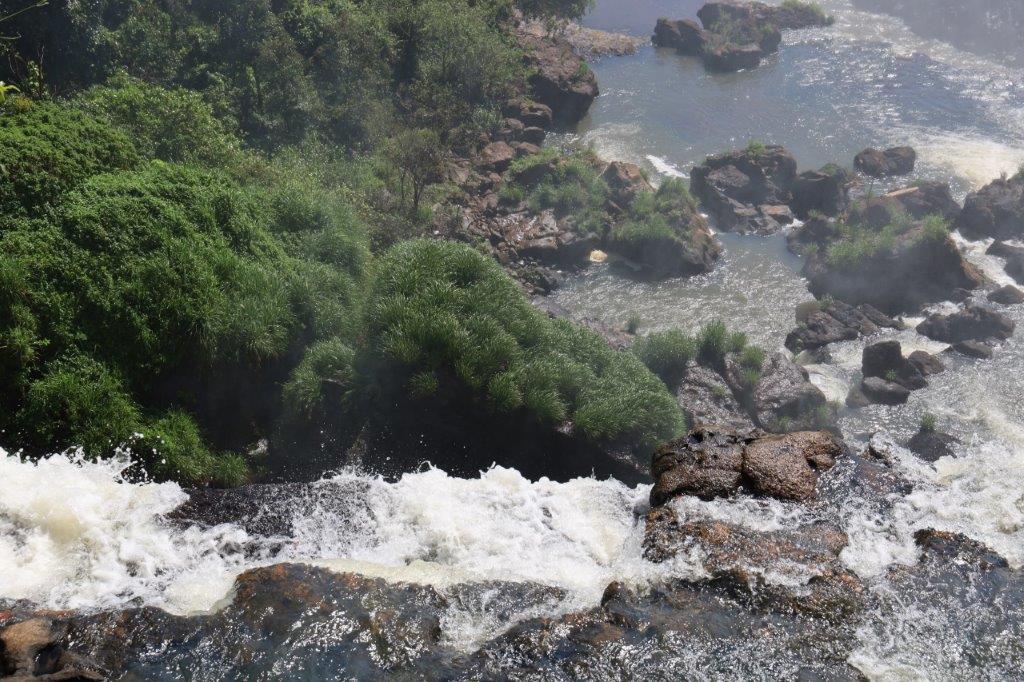 However The Wandelgek chose a 3 day visit, meaning and a 3 night stay.
However The Wandelgek chose a 3 day visit, meaning and a 3 night stay.
This gives you plenty of opportunity to visit all the trails on both sides of the border and to visit tge zparque das Aves and do the boattrip as well.
Above and beneath is a photo showing the hazy shade of tiny water droplets, forming mist blanket which flat into the trees, thus creating the perfect circumstances for a subtropical rainforest …
And then there are always these see through views which show how humongously large these falls really are ….
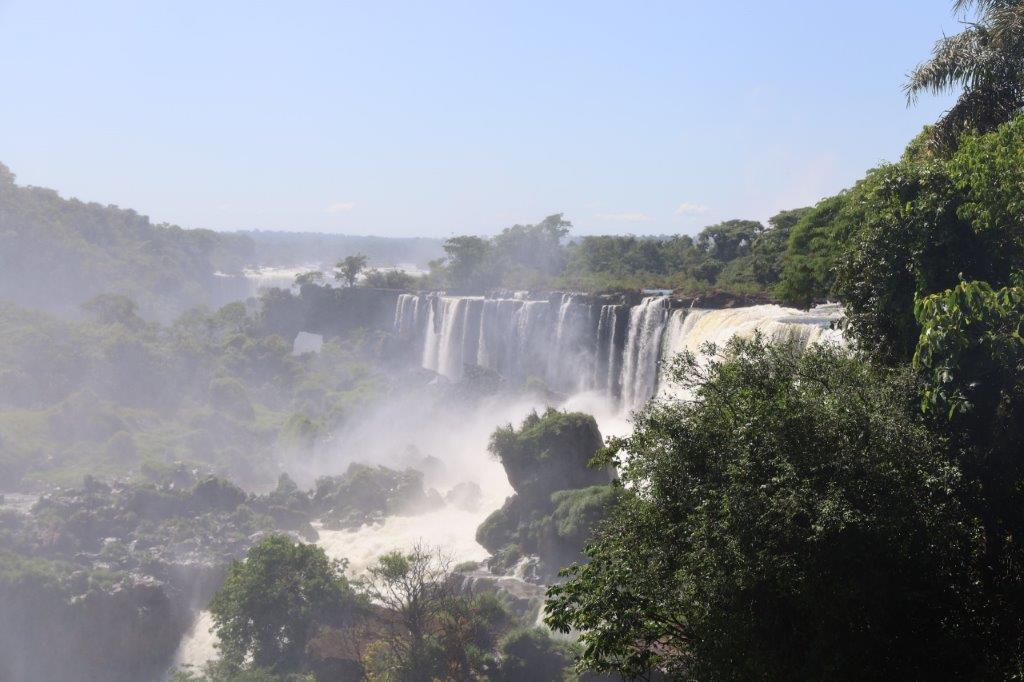 You know…even these rocks, dwarved by those falls, are like small mountains compared to the size of us humans and the animals…
You know…even these rocks, dwarved by those falls, are like small mountains compared to the size of us humans and the animals…
It is funny to understand how relatively calm the water is on top, and now see it as a roaring white water fury plunging down …
Look at that roaring menace ….
And then this calm water on top …
Long ago The Wandelgek watched this Astrid Lindgren movie about Pipi Longstockings, floating inside a barrel and tumbling down a waterfall. That should have been filmed overhere. I hope if they ever do a remake, it will …
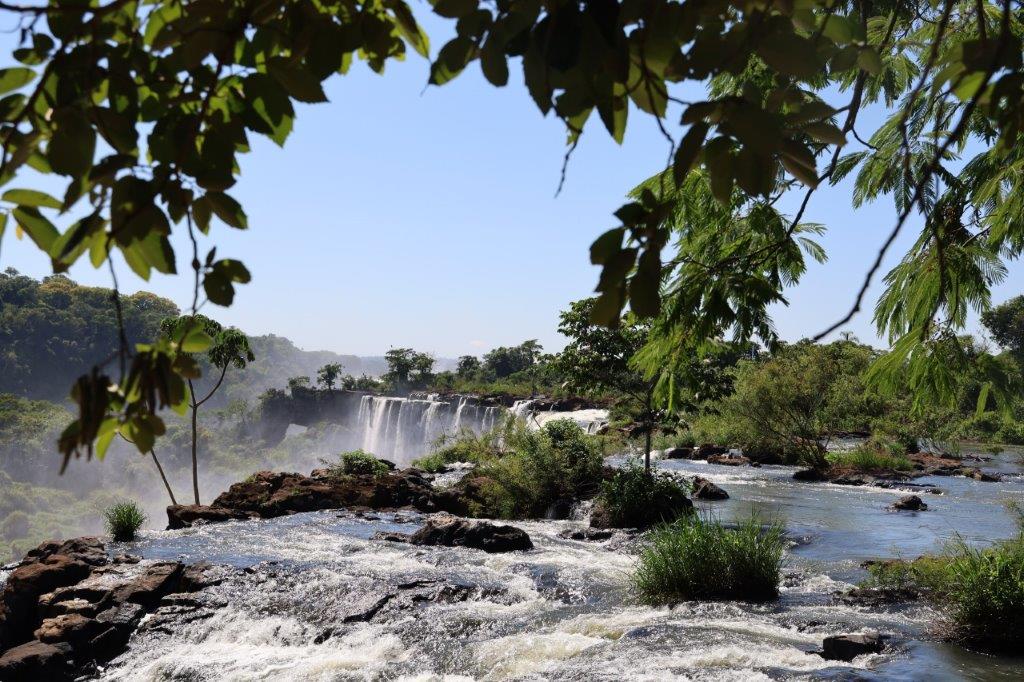 These pics turned out quite nice…
These pics turned out quite nice…
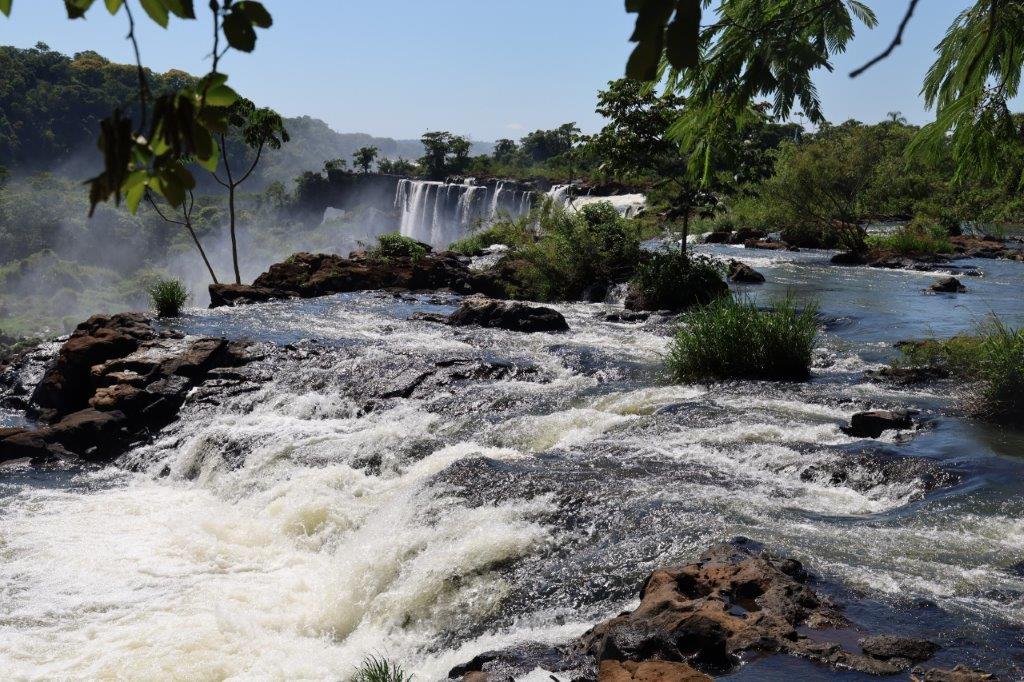 Next are some spectacular movies of the Falls…
Next are some spectacular movies of the Falls…
Did I mention it was very hot? The air was pregnant with moist and sweating meant getting wet big time…
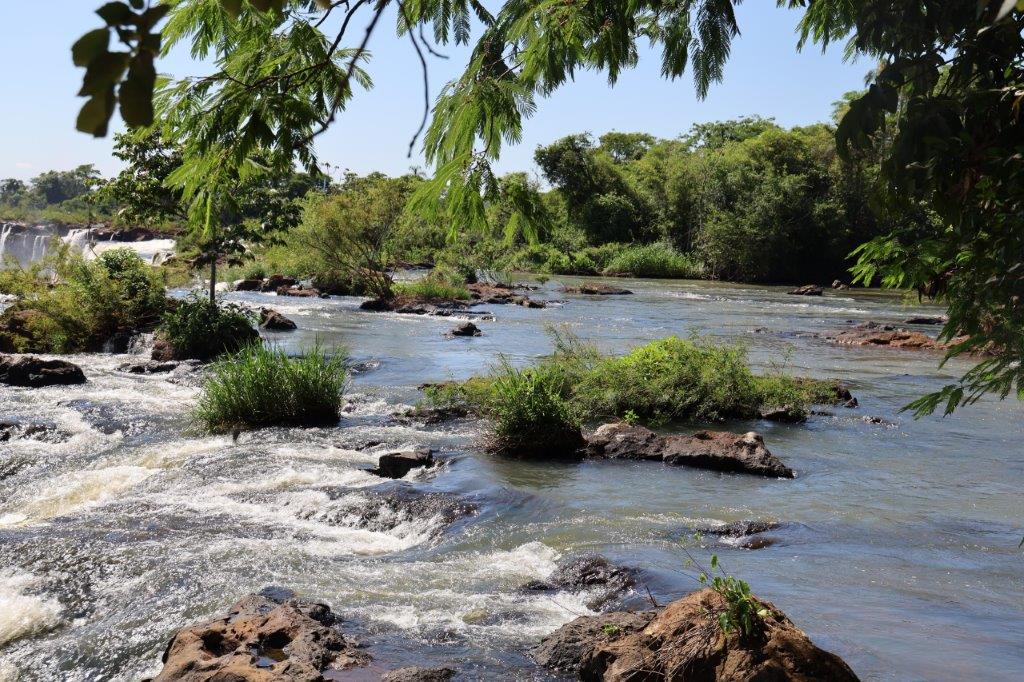 However, there was no escape and The Wandelgek thought of the pool at his resort, while he climbed or descended in this tropical heat…
However, there was no escape and The Wandelgek thought of the pool at his resort, while he climbed or descended in this tropical heat…
The water sometimes really looked inviting but for the razor sharp rocks and of course the falls where it streamed towards …
Legend has it that a deity planned to marry a beautiful woman named Naipí, who fled with her mortal lover Tarobá in a canoe. In a rage, the deity sliced the river, creating the waterfalls and condemning the lovers to an eternal fall.
The semicircular waterfall at the heart of this site is some 80 m high and 2,700 m in diameter and is situated on a basaltic line spanning the border between Argentina and Brazil. Made up of many cascades producing vast sprays of water, it is one of the most spectacular waterfalls in the world.
Iguazú Falls were named as one of the Seven New Natural Wonders of the Modern World in 2011.
The circuito inferior
The Lower Circuit offers a breathtaking panoramic view of the horseshoe of the falls. This circuit’s trail 1st descends down the waterfalls cascade sections (Iguazu is not going down at once but in two mayor sections), providing an incredible experience. The circuit is easily accessible as there are no stairs, and its length is only 1,750 meters with an estimated time of walking through of approximately 2 hours. Afterwards people having difficulty climbing stairs can retrace their steps. At the end stairs are ascending to the upper level.
On this circuit, The Wandelgek experienced much more of the jungle and of the landscape surrounding him. There are metal walkways which take you underneath the falls and into the falls’s center, offering a much more immersive experience and its more like having full contact with nature. He actually felt the jungle, meaning the spirit of the jungle with its humidity, sounds, aromas, and the penetrating steam coming from the falls that takes over the entire area. A raincoat is in some areas not a luxury. Walking underneath the falls, The Wandelgek witnessed the raw power of the water as it cascades down from above.
If you look closely in the movie above, you can even see butterflies flying through the air (from bottom left to bottom right).
Near the end, before ascending, is the horseshoe view, where The Wandelgek had the most wide angled view over the falls.
The Wandelgek had been impressed by these falls for a very long time and had made a drawing of them to be used in a comic book as an otherworldly place…
It is possible to subsequently go on a boat trip which takes you right into the largest falls, but The Wandelgek chose not to do that. Instead he went back to his resort and the pool.

